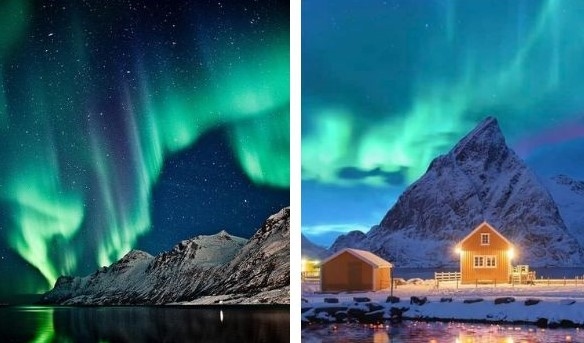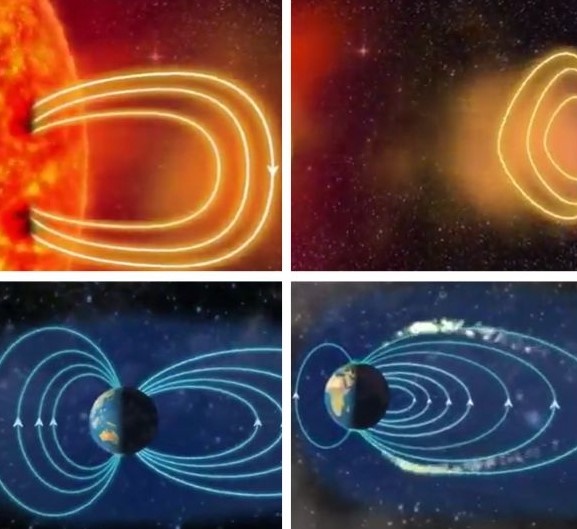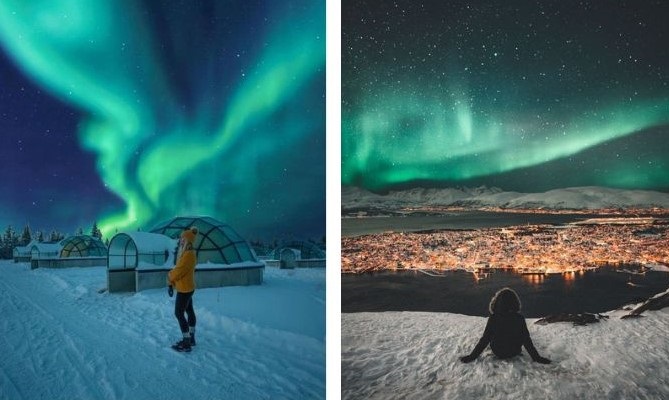1. What is the aurora phenomenon?

Amazing how the aurora phenomenon is - Source: Pinterest
2. Reasons why the aurora is held?
The aurora phenomenon is the result of various factors influenced by sunlight, light emission, electron interactions, and gas molecules.

How to operate the aurora phenomenon - Source: Internet
2.1. The aurora occurs due to the impact of sunlight
Sunlight contains electrically charged particles carrying energy. When this energy hits the Earth's atmosphere, it can interact with gas molecules. Therefore, depending on the intensity of sunlight, the energy exchange with gas molecules leading to the aurora phenomenon varies.
2.2. The aurora phenomenon occurs due to the stimulation of electrons
Energy from sunlight can stimulate electrons in gas molecules, raising them from lower to higher energy states. When these electron collisions create oscillations in the magnetic field, the aurora phenomenon gradually begins to appear.
2.3. The colors of the aurora phenomenon
The colors of the aurora phenomenon result from various gas molecules in the atmosphere emitting different colors of light. For instance, nitrogen and oxygen can produce green, red, or purple hues depending on altitude and environmental conditions. Therefore, if observers witness the multicolored display of the aurora phenomenon ranging from green, purple, to blue, it is due to the different gas molecules contributing to the color spectrum.
3. Why is the aurora phenomenon mainly observed in Europe?
The aurora phenomenon is typically observed in polar regions, including both the near-northern and near-southern polar areas. Therefore, countries in the vicinity of the northern polar region such as European countries, North America, Russia, Sweden, and Norway often have good opportunities to observe this phenomenon. However, it is important to note that the aurora phenomenon can also occur in near-southern polar regions such as South America, South Australia, New Zealand, and other near-polar regions around the world.

Almost aurora phenomenon occurs in Europe - Source: Internet
Factors influencing the observation of the aurora include geographical location, altitude, atmospheric conditions, and solar activity. The places with better opportunities to observe the aurora are those with good darkness, minimal light pollution, and ideal weather conditions.
4. How long does aurora phenomenon occur?
The duration of the aurora phenomenon can vary from a few minutes to several hours, depending on atmospheric conditions and solar activity. Typically, auroras can appear and disappear rapidly. However, in some cases, they can last for a longer period of time. The best time to observe the aurora is often during red nights, where there is good darkness and minimal urban light pollution. Additionally, auroras often occur during times when the Sun is less obstructed by the Earth and the atmosphere.
In polar regions, the aurora phenomenon can be more frequently observed during periods such as winter when nights are longer, and the Sun never fully sets below the horizon, creating favorable conditions for this phenomenon.
5. The Aurora phenomenon has affected people's health, has it not?
The aurora phenomenon does not have negative effects on humans or the environment. In fact, it provides a wonderful and exciting experience for those who have the opportunity to witness it, especially in European countries like Iceland. Consequently, in European countries, there are also "aurora hunting" tours available for tourists who are passionate about exploring the world of auroras.

And aurora phenomenon has not affected people health - Source: Internet






